The Lost Towers of the Guelph-Ghibelline Wars
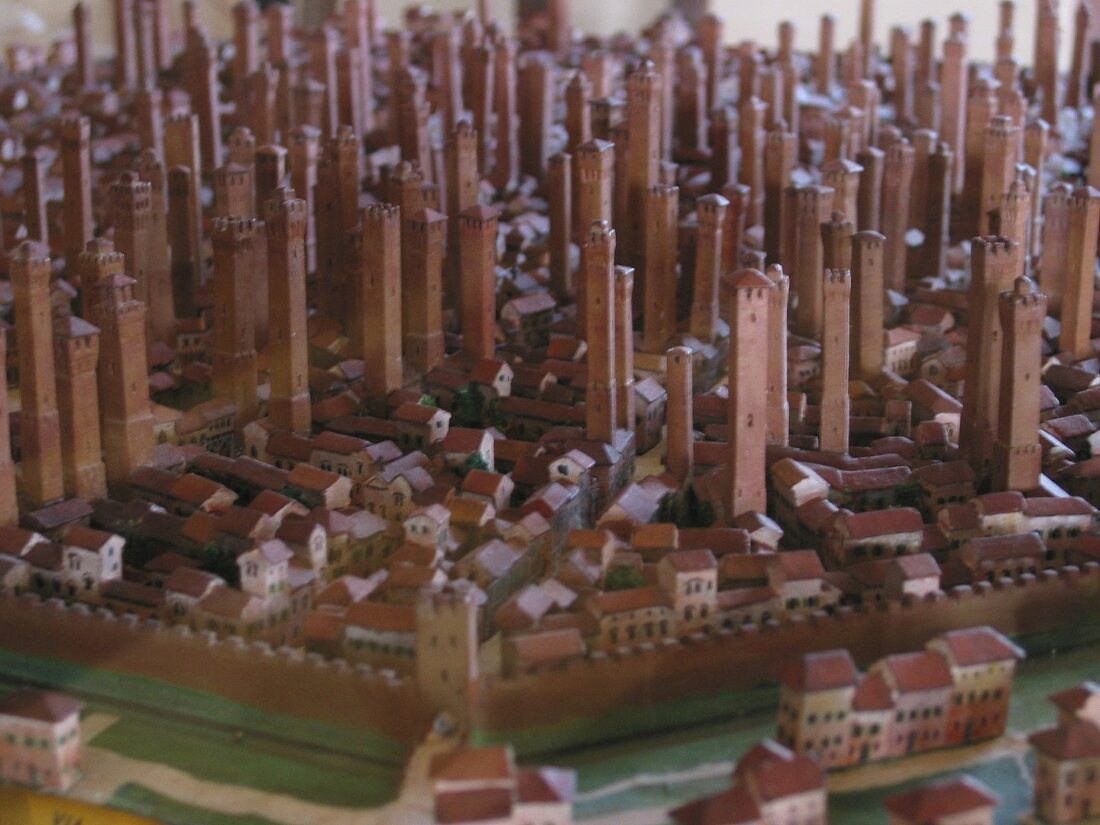
Looks fake, doesn’t it? This implausible Medieval forest of towers, as dense as Manhattan skyscrapers, is our best reconstruction of the town of Bologna at its height, toward the end of the Medieval Guelph-Ghibelline wars. We don’t see many such towers today… or think we don’t, but actually their remnants are all over Italy.
Often when in Florence one sees buildings like this, where one section is rough stone standing out amid stucco neighbors.
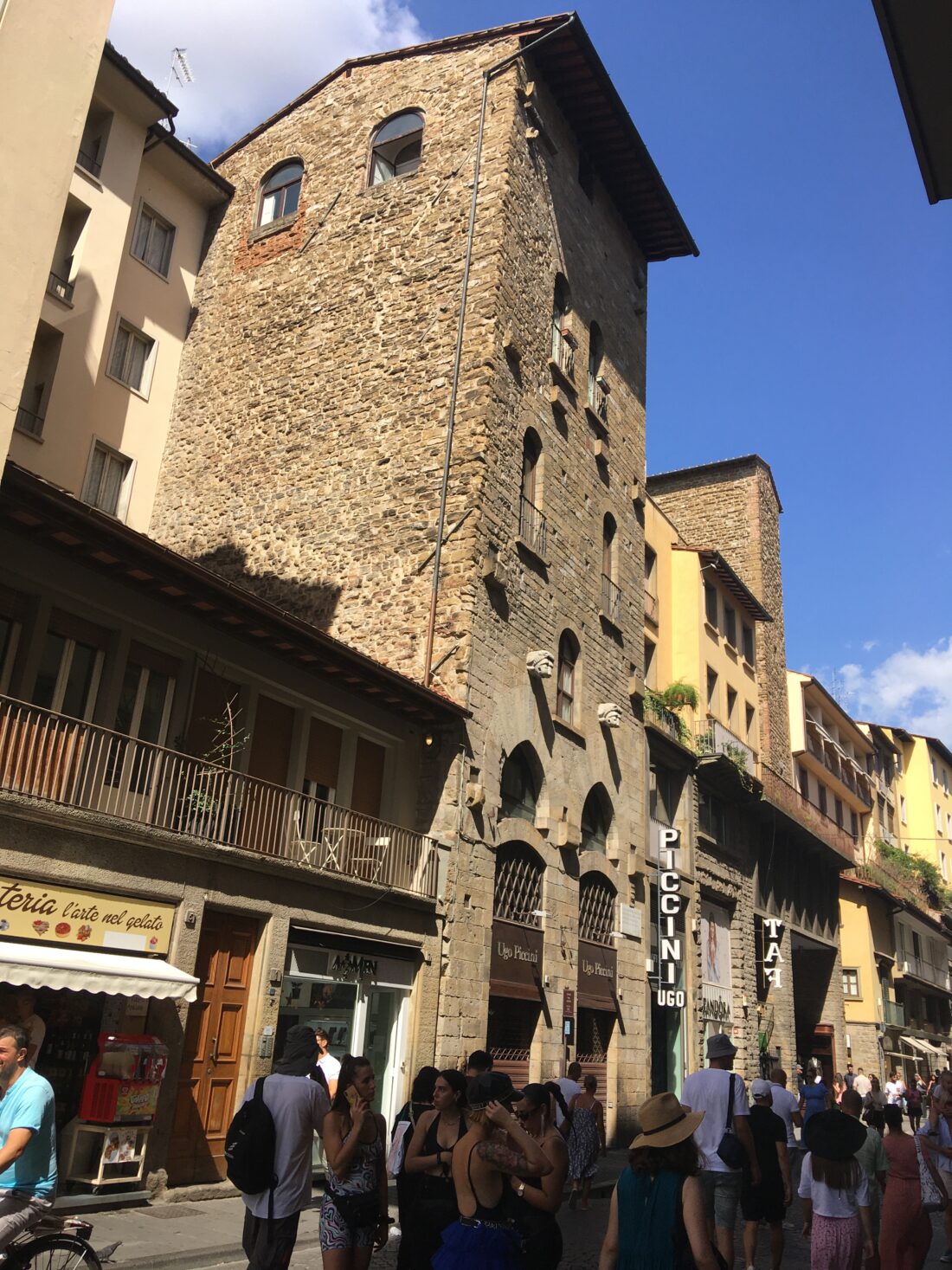
These are actually the bottom nubs of Medieval stone towers. The town of San Gimigniano (below) is famous for having several still intact. Wealthy families built these as mini-fortresses within the city, where they could defend against riots, enemy families (think Montagues and Capulets) and invasion:
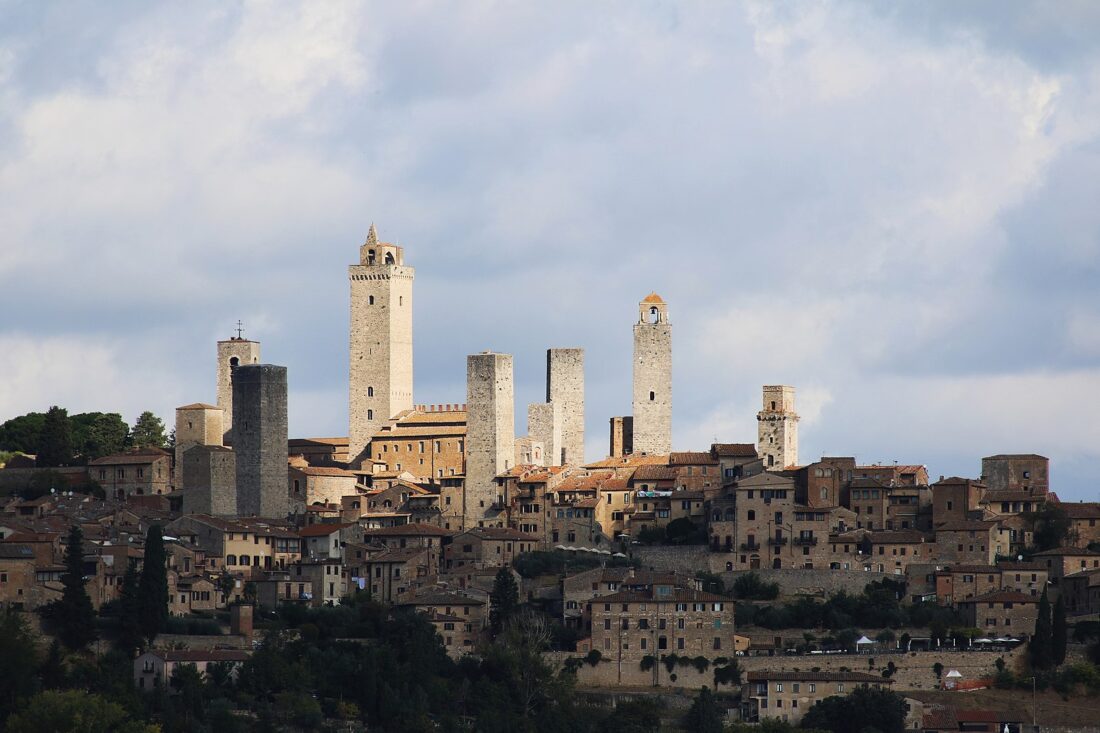
Signs of wealth and prestige, these all-stone buildings were also fireproof, leading to a terrible but effective tactic: take your family, treasures & goods up into your tower then set fire to enemies’ homes and let the city burn around you while you sit safe above. This was VERY BAD for cities.
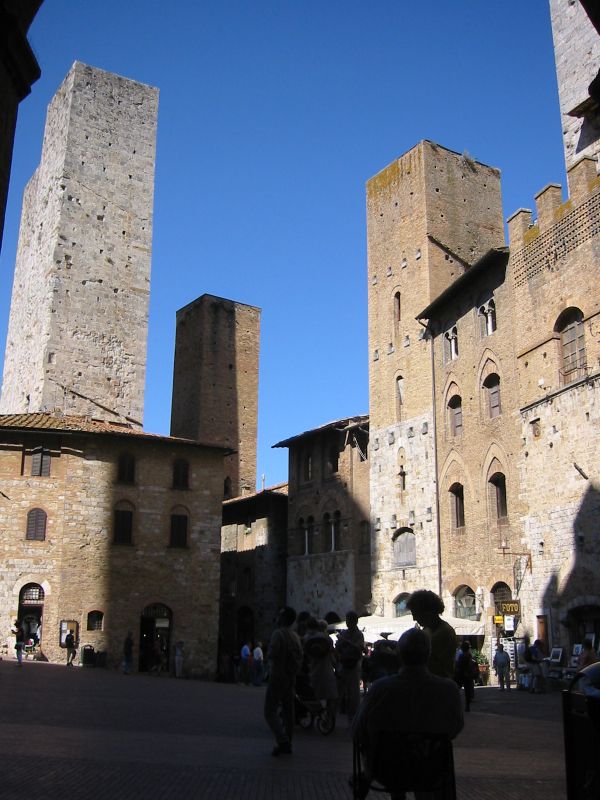
After many disasters, Florence’s solution was to BAN private buildings over a certain height, forcing everyone who had a tower to knock the top off down to regulation height, leaving these recognizable stone nubs all around the city. This round one below is the oldest (now a restaurant).
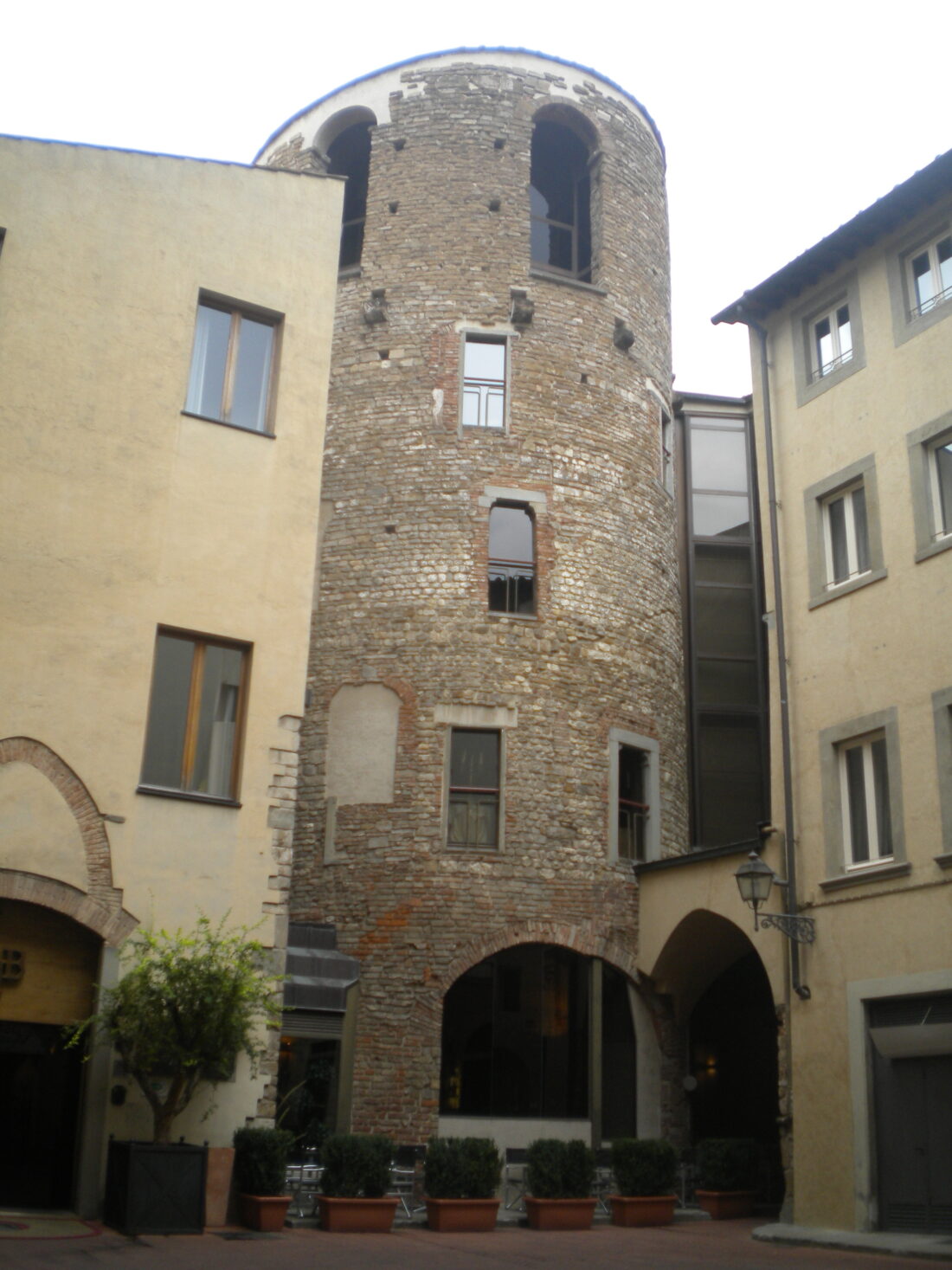
My favorite tower stub is this one, in Via dei Cerchi. I lived on the top floor for a year as a grad student, up 111 steps! I had calves of steel by spring, but the views from the top looked like someone had put a poster of Florence on the wall except it was a window!
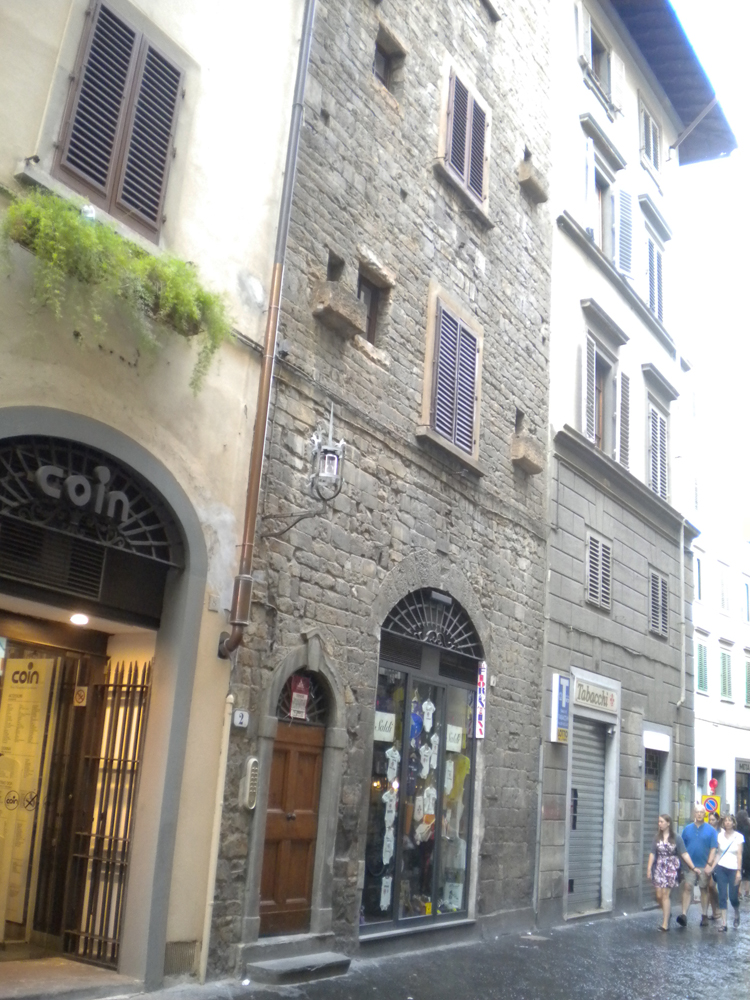
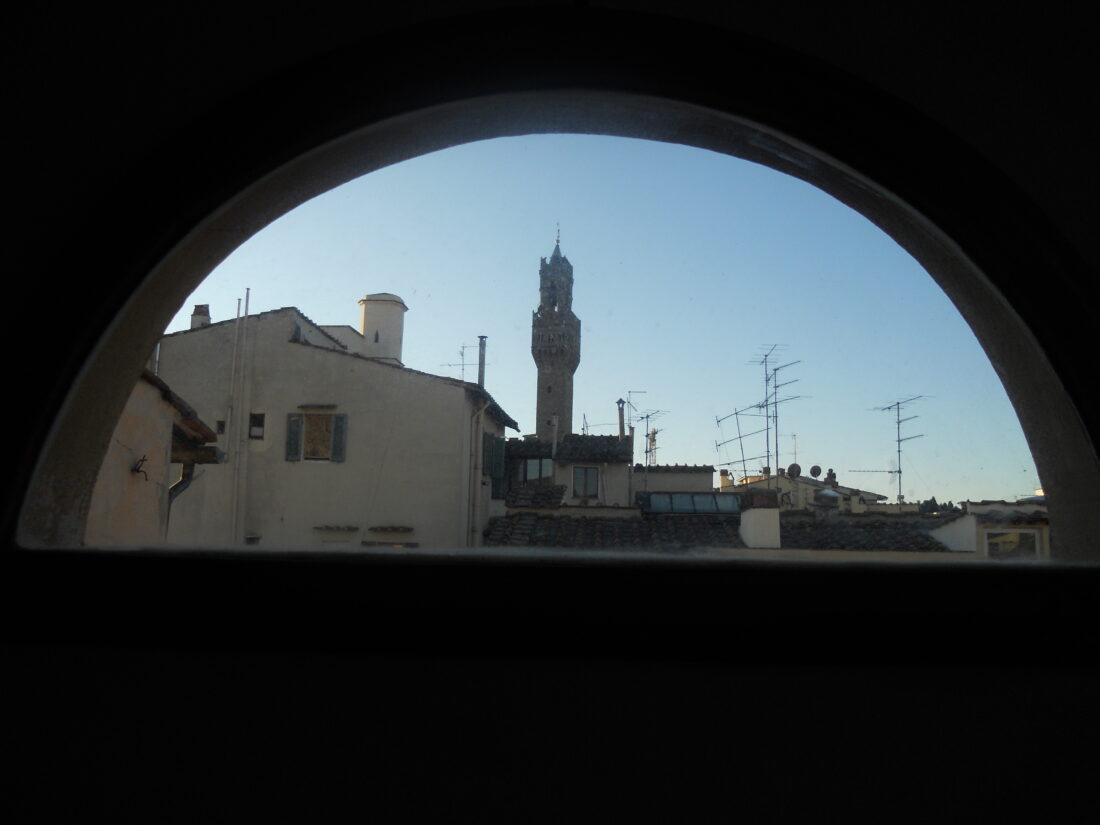
Only city buildings were allowed to exceed the mandated height, which is why Florence’s skyline is now all special buildings: monastery bell towers, the cathedral & baptistery, Orsanmichele the city’s granary (tall to keep grain away from water & mice), the seat of government, and one special guy…
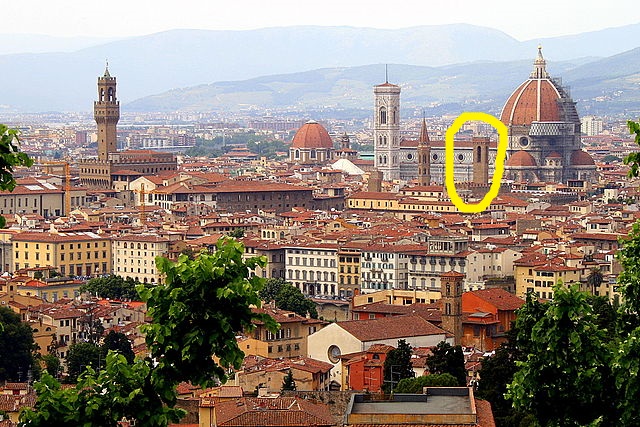
The tower on the right here is part of Bargello, the prison & police fortress, but it didn’t start that way. It was built by a private family, who sold it to the city when the law banning towers was passed, and the city incorporated it into their prison fort.
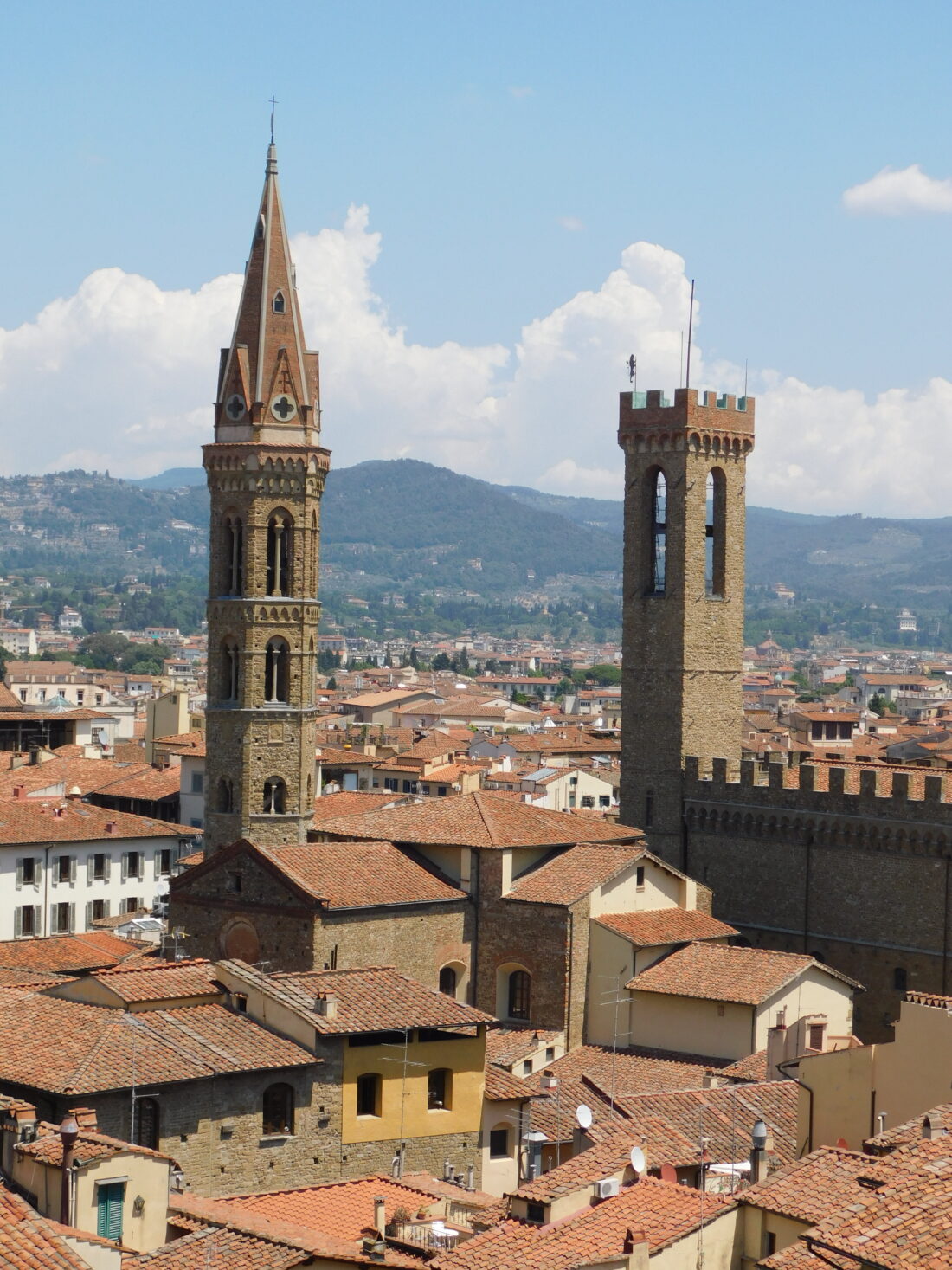
The city jail had to be a fortress in case someone from a powerful family was arrested and the family sent goons to break them out (those guys who bite their thumbs in the opening scene of Romeo & Juliet would *totally* have stormed the jail to bust Romeo out!).
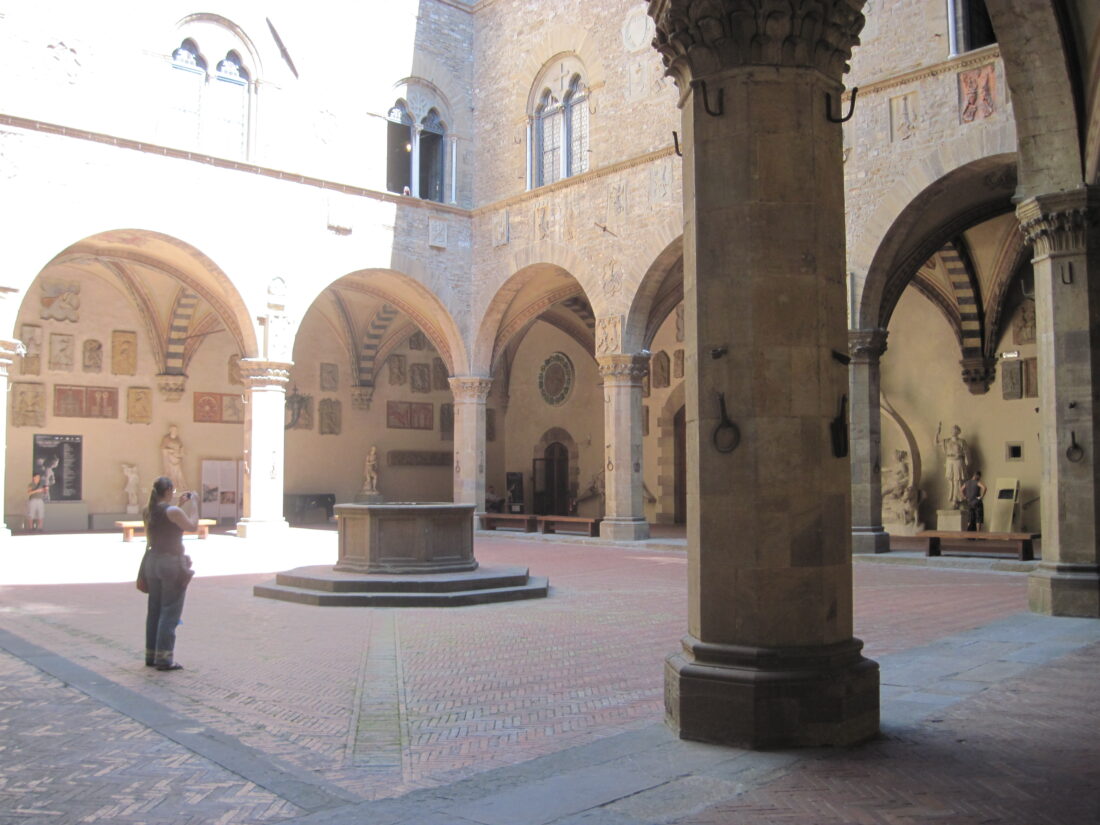
In this photo you can see how the brick battlements are a later addition, added to the tower as part of its transformation from private fortress to public.
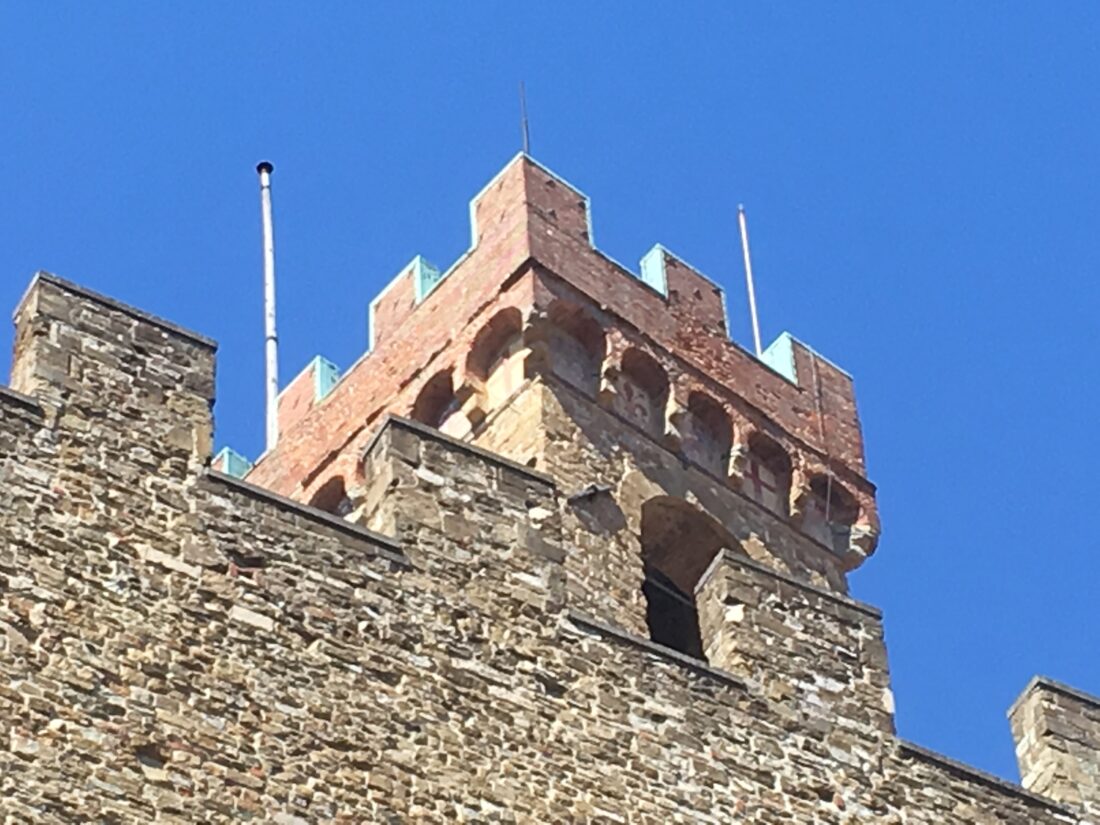
What did Florence look like back when it had all its towers? Its long-time ally across the mountains Bologna is famous for still having two intact towers, but in the Middle Ages Bologna was known as the City of 100 Towers because so many families built them. The reconstructions look absolutely incredible. Florence didn’t have so many but did have dozens, so the richest part of the city center would have looked much like this. Much to the despair of the city fire brigade!
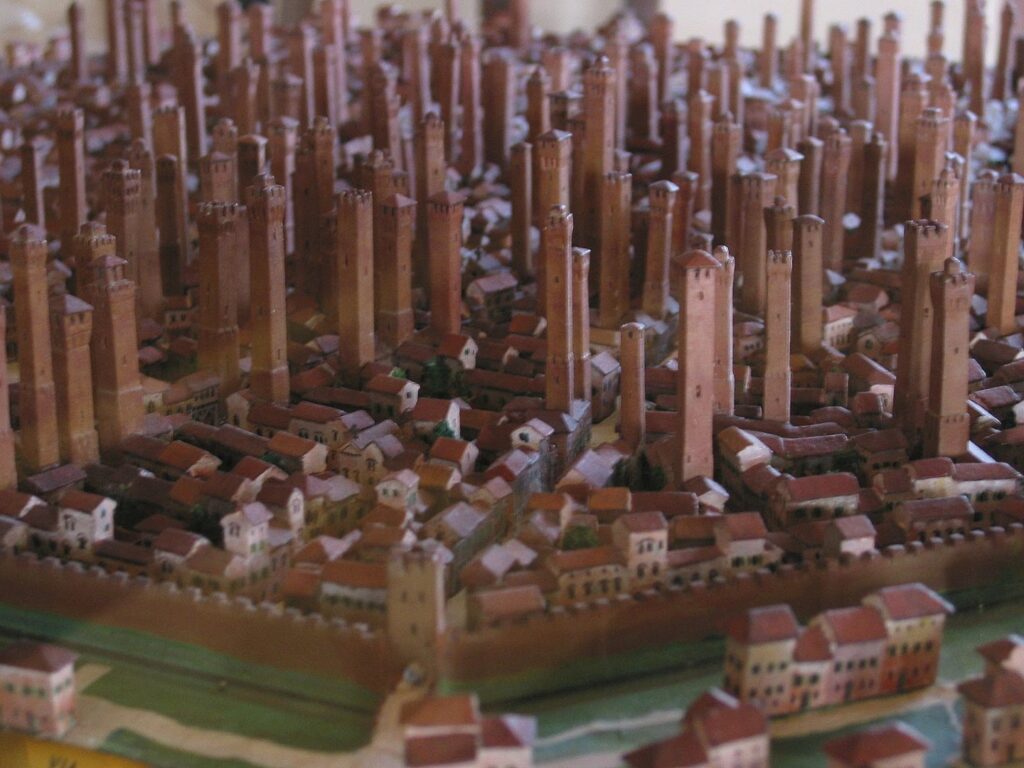
So, whether in a film or on the street, if you ever see a historic Italian city and walk along a block where for some reason one chunk of wall is stone and all the others smooth, you’re probably looking at a relic of the faction feuds that Guido Ruggiero aptly calls “The Italian 300 Years’ War.”
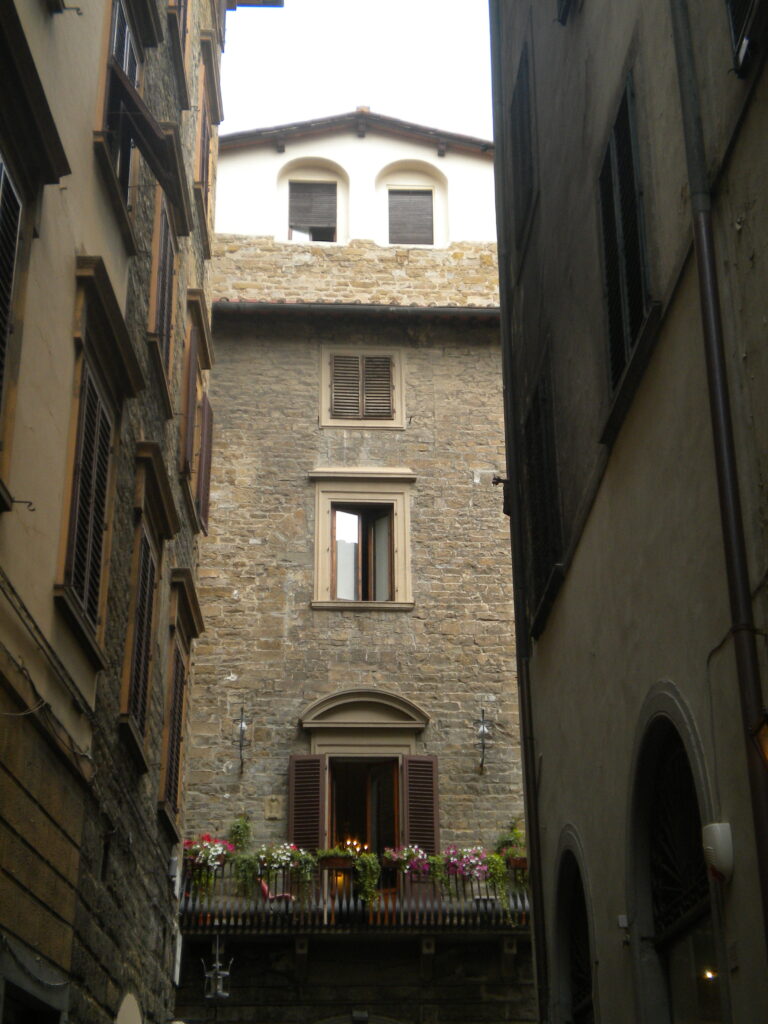
![]() I talk about this long war in “Inventing the Renaissance,” one of many points of continuity which show how the supposed difference between a bad “Dark Ages” and Renaissance “golden age” is 100% propaganda, but fascinating propaganda with a deep history.
I talk about this long war in “Inventing the Renaissance,” one of many points of continuity which show how the supposed difference between a bad “Dark Ages” and Renaissance “golden age” is 100% propaganda, but fascinating propaganda with a deep history.
And I’ll share more tidbits like over the coming days as we countdown to the book’s release!
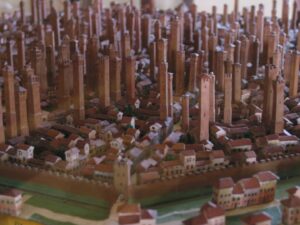
12 Responses to “The Lost Towers of the Guelph-Ghibelline Wars”
-
Your photography is pretty great.
-
I would like to commend you on your restraint. You had the perfect opportunity to write, “Looks like a bunch of baloney, doesn’t it?” in your opening, and you resisted.
-
[…] an era we know much less about than we think we do, and most of what we do think we know is wrong. The photo is from her site Ex Urbe, where you can read more about these things, and see some photos of modern-day Bologna and the […]
-
[…] The Skyscrapers of Medieval Italy (Ex Urbe) by Ada Palmer In medieval Italy, factional wars led powerful families to build huge towers that served as little urban fortresses. Their stubs are still there today. […]
-
[…] Lost Towers of the Guelph-Ghibelline Wars” [Ex Urbe]. “Looks fake, doesn’t it? This implausible Medieval forest of towers, as dense as […]
-
[…] Lost Towers of the Guelph-Ghibelline Wars” [Ex Urbe]. “Looks fake, doesn’t it? This implausible Medieval forest of towers, as dense as Manhattan […]
-
[…] Misplaced Towers of the Guelph-Ghibelline Wars” [Ex Urbe]. “Seems to be faux, doesn’t it? This implausible Medieval forest of towers, as dense as […]
-
I feel like a certain structural engineer of your acquaintance will find this post quite intriguing! (LOL)
-
[…] Lost Towers of the Guelph-Ghibelline Wars” [Ex Urbe]. “Looks fake, doesn’t it? This implausible Medieval forest of towers, as dense as Manhattan […]
-
[…] Lost Towers of the Guelph-Ghibelline Wars” [Ex Urbe]. “Looks fake, doesn’t it? This implausible Medieval forest of towers, as dense as Manhattan […]
-
[…] From Ex Urbe: The Lost Towers of the Guelph-Ghibelline Wars. […]
-
[…] a post last week, I talked about how Renaissance towns used to be full of tall stone towers, built by rich families […]



